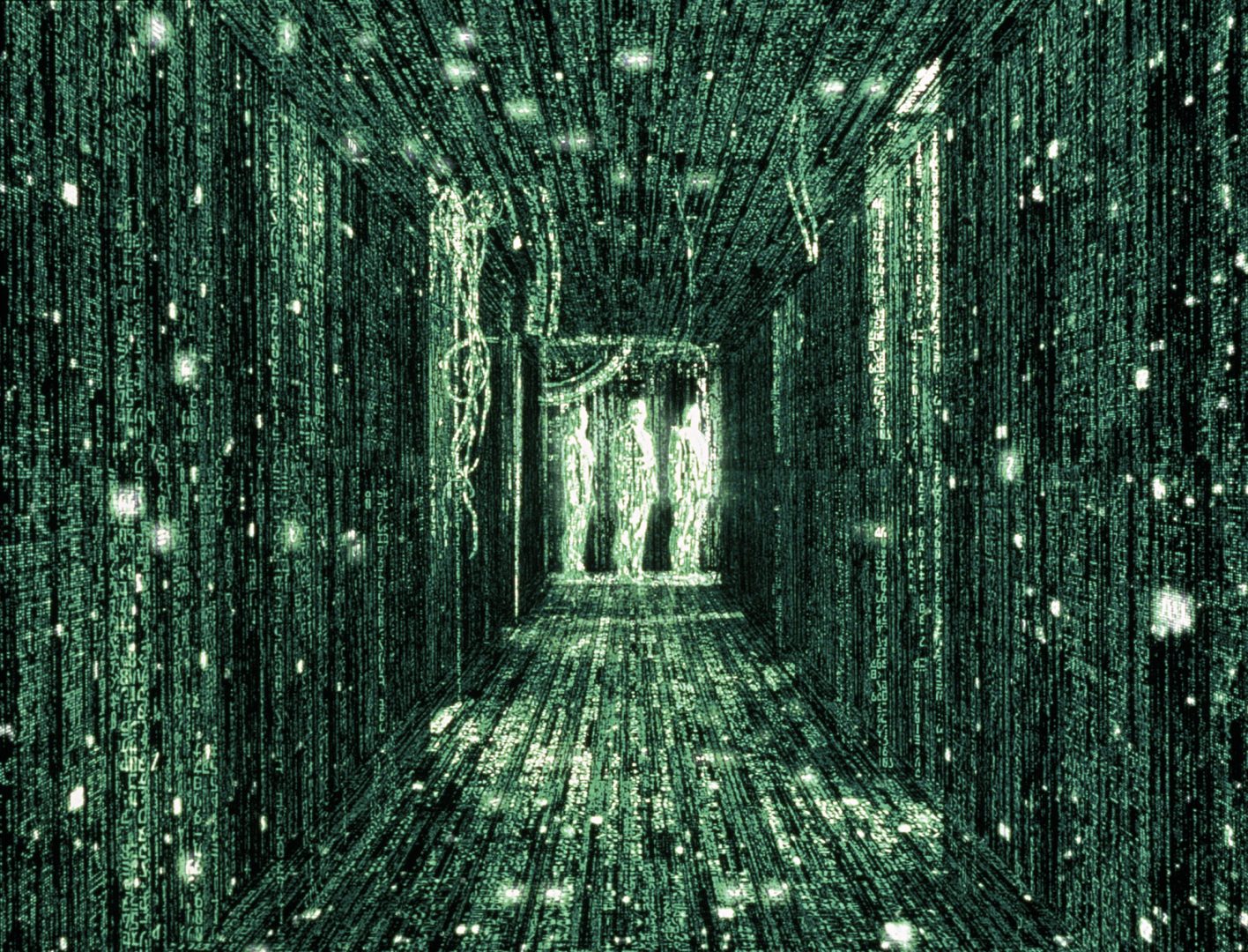The Academy Museum of Motion Pictures has announced details of its two marquee Fall 2024 exhibitions, “Color in Motion: Chromatic Explorations of Cinema” and “Cyberpunk: Envisioning Possible Futures Through Cinema,” on view Oct. 6, 2024.
“Color in Motion” investigates the role of color in film, from the technological advancements that made its use possible, to the ways filmmakers use color as a storytelling tool, to its psychological impact on audiences. On view Oct. 6, 2024 through July 13, 2025, this exhibition highlights the role color has played since the earliest days of film history—both as a tool for technological experimentation and artistic expression.
The exhibition features technologies from Technicolor and Eastman Color, objects such as the legendary ruby slippers designed by Gilbert Adrian from “The Wizard of Oz” (1939), the green dress designed by Edith Head and worn by Kim Novak in “Vertigo” (1958), a Wonka chocolate bar from “Willy Wonka and the Chocolate Factory” (1971), a blue ensemble worn by Jaime Foxx as Django in “Django Unchained” (2012), many animations and films, and a recreation of the stargate corridor from Stanley Kubrick’s “2001: A Space Odyssey” (1968), which will transport visitors into a colorverse.
Jessica Niebel, senior exhibitions curator, said, “Color in Motion will offer visitors both dynamic learning opportunities and emotional connection through an engagement of the senses. Exploring color through the lenses of technology, artistry, and experimentation, the exhibition is as entertaining as it is informational.”
“Cyberpunk,” on view Oct. 6, 2024 through April 12, 2026, examines the global impact and lasting influence of the science fiction subgenre cyberpunk on film culture. The Academy Museum’s presentation explores this genre through an international and multigenerational lens, featuring more than 25 films, including “Blade Runner” (1982), “Tron” (1982), “Videodrome” (1983), “Terminator 2: Judgment Day” (1991), “The Matrix” (1999), “Sleep Dealer” (2008), and “Alita: Battle Angel” (2019), as well as Afrofuturist films, including “Pumzi” (2009) from Kenya, “Neptune Frost” (2021) from Rwanda, and Indigenous futurist films, such as “Night Raiders” (2021) from Canada.
“With the rapid advancement of new technologies, including artificial intelligence, now feels like an especially relevant moment to present an exhibition on cyberpunk cinema,” said Vice President of Curatorial Affairs Doris Berger. “I’m particularly excited that our exhibition presents classic cyberpunk movies alongside more recent futurist films from around the world.”
“Color in Motion” and “Cyberpunk” are part of PST ART: Art & Science Collide, an initiative presented by Getty featuring more than 70 cultural institutions across Southern California, offering thematically linked exhibitions and programs in a five-month-long exploration of the intersections of art and science. Both exhibitions will have companion publications and bespoke merchandise available at the Academy Museum Store.
Coinciding with the opening of “Color in Motion,” the Academy Museum will present a selection of films in a limited screening series entitled The Wonder of Technicolor, kicking off with a new 35mm print of Alfred Hitchcock’s “Vertigo” (1958) from the Academy Film Archive on Sunday, Oct. 6. The series will run through Nov. 23. In January 2025, the museum will present a screening series to complement “Cyberpunk,” featuring films by David Cronenberg, the Wachowskis, and more.
As a prelude to PST ART, the Academy Museum will host a screening of “Hackers” (1995) at 7:30 p.m. on Saturday, July 20, 2024. In advance of the screening, visitors will be invited to participate in photo opportunities and receive complimentary PST Art Merchandise.
COLOR IN MOTION: CHROMATIC EXPLORATIONS OF CINEMA

Spanning 130 years (1894–2024), “Color in Motion” offers an engaging sensory experience through dynamic film installations and nearly 150 objects from the silent era to the digital age. Rarely exhibited technology, costumes, props, and film posters represent the work of several disciplines, including directors, cinematographers, costume and set designers, colorists, and animators. More than 110 films—international in scope—are represented in the exhibition. The exhibition is organized by Senior Exhibitions Curator Jessica Niebel, Assistant Curator Sophia Serrano, Research Assistant Alexandra James Salichs, and former Curatorial Assistant Manouchka Kelly Labouba. “Color in Motion” is served by an advisory panel whose areas of expertise include early film history, historical film color processes and techniques, animation, and color theory. Advisors include Barbara Flueckiger, University of Zurich and Scan2Screen; Joshua Yumibe, Michigan State University; Kirsten Moana Thompson, Seattle University; and Ranjani Mazumdar, Jawaharlal Nehru University.
The exhibition is conceptualized around six main themes: Choreographing Color, Technologies and Spectacles, Monochrome Film Installation, Color as Character, Experimentation, and Color Arcade. Visitors will begin their journey in the Choreographing Color gallery, which illustrates the connection between color, music, and movement. This gallery features “The Serpentine Dance” (ca, 1894), one of the earliest examples of color in film history, inspired by the dance originally developed by American performer Loïe Fuller, and which blends intricate choreography and hand-painted film to create the illusion of hued lighting. The gallery goes on to feature advancements in color, including the three-strip Technicolor animation “Silly Symphonies: Flowers and Trees” (1932) and dance numbers from a global array of musicals. Costumes in this gallery include the eponymous ballet slippers from “The Red Shoes” (1948) designed by Hein Heckroth, the red ensemble worn by Maggie Cheung as Flying Snow in “Hero” (2002) designed by Emi Wada, and a red sari worn by Aishwarya Rai Bachchan in “Jodhaa Akbar” (2008) designed by Neeta Lulla.
Visitors will move onto Technologies and Spectacles, a gallery that features technological equipment spanning the history of color technologies, including hand and stencil coloring, tinting and toning, Kinemacolor, Technicolor, Agfacolor, Eastman Color, and digital coloring processes. Presented on a large circular platform, select technologies will be described alongside monitors showing explanatory animations and the images they produce. Key items include a Three-Strip Technicolor camera, a Kinemacolor Projector, DaVinci Digital Coloring Console Board, and a Eugene Louis Doyen 35mm hand cranked color motion picture camera.
Technologies and Spectacles also highlights the ways in which women were integral to the advancement of color technologies and development of film colors as these areas offered an accessible entry point for women to work in the film industry. As shown through an assortment of photographs and artifacts, French film production and distribution company Pathé employed hundreds of young women to hand-paint films at the turn of the century, later transitioning to a more industrialized stenciling process in 1903, with over 200 women in their labor force by 1906. Established in 1923 in the United States, Disney’s Ink & Paint Department broke ground as the animation industry’s first all-female division and is represented in the exhibition through photography, materials used for inking and painting, and animation cel reproductions created by the current Disney Ink & Paint Department. Executive head of Technicolor’s Art Department, Natalie Kalmus (née Dunfee), was the color consultant of all Technicolor films produced from 1934 to 1949. She collaborated with art and wardrobe departments of studios during production of Technicolor films to create the best visual palette to highlight Technicolor’s technology. Kalmus is represented in the exhibition through her book “Color Consciousness” (1935), dyes used by Technicolor, and photographs.
In Monochrome Film Installation, three large-scale screens depicting tinted film clips from the silent era will expose visitors to the hallucinatory, vibrant, and sometimes other-worldly quality of monochrome film colors. Audiences will be absorbed in monochrome hues from the red of Nero, or the “Fall of Rome” (1909) to the yellows of “Die Nibelungen: Kriemhild’s Revenge” (1924). This gallery showcases new multispectral scans produced with the Scan2Screen workflow of film prints collected by the Eye Filmmuseum, Amsterdam; Lichtspiel/Kinemathek Bern; the Library of Congress, Washington DC; and the Bundesarchiv-Filmarchiv, Berlin. A bespoke score composed by Nick Sena will enhance and unify the experience.
Contrasting the singular, dominant hues of the Monochrome Film Installation, the subsequent gallery Color as Character offers an assortment of objects that dive into case studies of color use by filmmakers, including directors, production designers, costume designers, and cinematographers, among others. The gallery demonstrates how color can be used to drive a film’s narrative, create meaning, determine character traits and moods, and establish time and location. Arranged by the colors of the rainbow, visitors will encounter an array of rare props and dazzling costumes, such as the legendary ruby slippers designed by Gilbert Adrian from “The Wizard of Oz” (1939), the green dress designed by Edith Head and worn by Kim Novak in “Vertigo” (1958), a Wonka chocolate bar from “Willy Wonka and the Chocolate Factory” (1971) , the yellow gown worn by Cate Blanchett in “Elizabeth: The Golden Age” (2007) designed by Alexandra Byrne, a model of the yellow house from “Up” (2009), a blue ensemble worn by Jaime Foxx as Django in “Django Unchained” (2012) designed by Sharen Davis, and the green gown worn by Adèle Haenel as Héloïse in “Portrait of a Lady on Fire” (2019) designed by Dorothée Guiraud.
The Experimentation gallery is divided into two sections, with a black box space featuring a single-screen projection showing Mary Ellen Bute’s “Color Rhapsody,” Oskar Fischinger’s “Kreise,” and Len Lye’s “Rainbow Dance” on one side and a gallery comprising concept art, animation drawings, and other experimental ephemera by these and other film artists.
“Color in Motion” concludes with a high-energy, participatory Color Arcade, which is set in a futuristic design inspired by neon cinema. The Color Arcade offers an opportunity for visitors to physically interact with color through the movement of their bodies, allowing them to see, create, and experience color in motion. The exhibition experience concludes with a nod to the stargate corridor from Stanley Kubrick’s “2001: A Space Odyssey” (1968), transporting visitors into a colorverse.
The exhibition is accompanied by a 272-page catalogue presenting analysis, case studies, and conversations with scholars and experts in the field. Edited with texts by exhibition curators Jessica Niebel and Sophia Serrano, it also includes contributions by Barbara Flueckiger, Alexandra James Salichs, Ranjani Mazumdar, Sarah Street, Kirsten Moana Thompson, and Joshua Yumibe. Illustrated with images spanning 130 years of cinema, this volume celebrates the vibrant history of color on screen. “Color in Motion: Chromatic Explorations of Cinema” is co-published by the Academy Museum of Motion Pictures and DelMonico Books • D.A.P. $55 retail/$49.50 members.
CYBERPUNK: ENVISIONING POSSIBLE FUTURES THROUGH CINEMA

“Cyberpunk: Envisioning Possible Futures Through Cinema” explores the origins and influence of cyberpunk and futurist cinema. Featuring near-future scenarios set in worlds that eerily resemble our own, these films juxtapose technological advances with social disorder, ecological crisis, and urban decay. Central to these stories are antihero characters who fight against corrupt political systems, global mega-corporations, and oppressive regimes. This exhibition is curated by Vice President of Curatorial Affairs Doris Berger, with Assistant Curator Nicholas Barlow, and Curatorial Assistant Emily Rauber Rodriguez. The curators worked with an advisory group of scholars comprising David A. Kirby, Cal Poly San Luis Obispo; Carlen Lavigne, Red Deer Polytechnic, Alberta, Canada; Akira Mizuta Lippit, USC, Los Angeles; Patrick B. Sharp, Cal State Los Angeles; as well as filmmakers Danis Goulet, George Hull, and Wanuri Kahiu.
Located in the museum’s double-height Hurd Gallery, the exhibition is accessible on two levels. On the first level, visitors will be introduced to cyberpunk and its legacy through film posters and early literary sources. They will move into an immersive media installation at the center of the exhibition where a band of moving images surrounds the gallery space, depicting wastelands, derelict urban settings, and digital landscapes from cyberpunk and futurist films. The centerpiece montage is shaped by a script penned by writer-director and MacArthur Fellow Alex Rivera illustrating the genre’s 20th-century origins and its 21st-century expansions into Afrofuturist, Indigenous futurist, and Latinx futurist films. On the galleries’ second level, visitors will be able to go behind the scenes to see how filmmakers create cyberpunk worlds with costumes, props, concept art, and production materials. In the museum’s lobby, visitors will be invited to engage in an immersive mixed reality experience. Using MR headsets visitors will explore a three to five-minute educational narrative on virtual production techniques in film and gain insight into the creative development process. The experience focuses on cyberpunk aesthetics and provides a glimpse into the process of creating a “Blade Runner”-inspired dystopian environment.
Cyberpunk features 24 original objects, including costumes, props, production art, books and magazines as well as 18 poster reproductions from iconic cyberpunk films, such as “Blade Runner” (1982), “Ghost in the Shell” (1995), “The Matrix” (1999), and newer films such as “Alita: Battle Angel” (2019) and “Neptune Frost” (2021). Highlights from the Academy’s collections include a costume from “Tron” (1982), designed by Elois Jenssen and Rosanna Norton, that has never been publicly exhibited and was conserved especially for this presentation; the Vid-Phon telecommunication device in its original booth and concept design drawings by visual futurist Syd Mead from “Blade Runner” (1982); a matte painting from “The Running Man” (1987); concept art from “Terminator 2: Judgment Day” (1991); and a prop silicone head and chrome skull from “Ex Machina” (2015). In addition, the exhibition will feature loans of a range of prop devices built to connect cinematic protagonists to virtual worlds, including the Accumicon–Spectacular Optometry International Helmet from “Videodrome” (1983) and the S.Q.U.I.D. (Superconducting Quantum Interference Device) headset and player from “Strange Days” (1995). It will also include the respirator headset and node gun from “Sleep Dealer” (2008) and the drone from “Night Raiders” (2021), both of which will be exhibited for the first time. Books and magazines related to the development of the cyberpunk literary genre will also be on view.
The exhibition is accompanied by a 192-page catalogue featuring rarely seen behind-the-scenes photographs, film stills, and concept art from iconic cyberpunk and futurist films. Case studies written by critics, historians, and filmmakers offer new perspectives on 23 cyberpunk and futurist films. Edited with an introduction by Doris Berger, the book includes contributions by Nicholas Barlow, Craig Barron, DeForrest Brown Jr., Maya S. Cade, Millie De Chirico, Ashley Clark, Shari Frilot, David A. Kirby, Norman M. Klein, Carlen Lavigne, Akira Mizuta Lippit, K. J. Relth-Miller, Emily Rauber Rodriguez, and Patrick B. Sharp, plus an interview with filmmakers Danis Goulet and Wanuri Kahiu. “Cyberpunk: Envisioning Possible Futures through Cinema” is co-published by the Academy Museum of Motion Pictures and DelMonico Books • D.A.P. $45.00 retail/$40.50 members.







